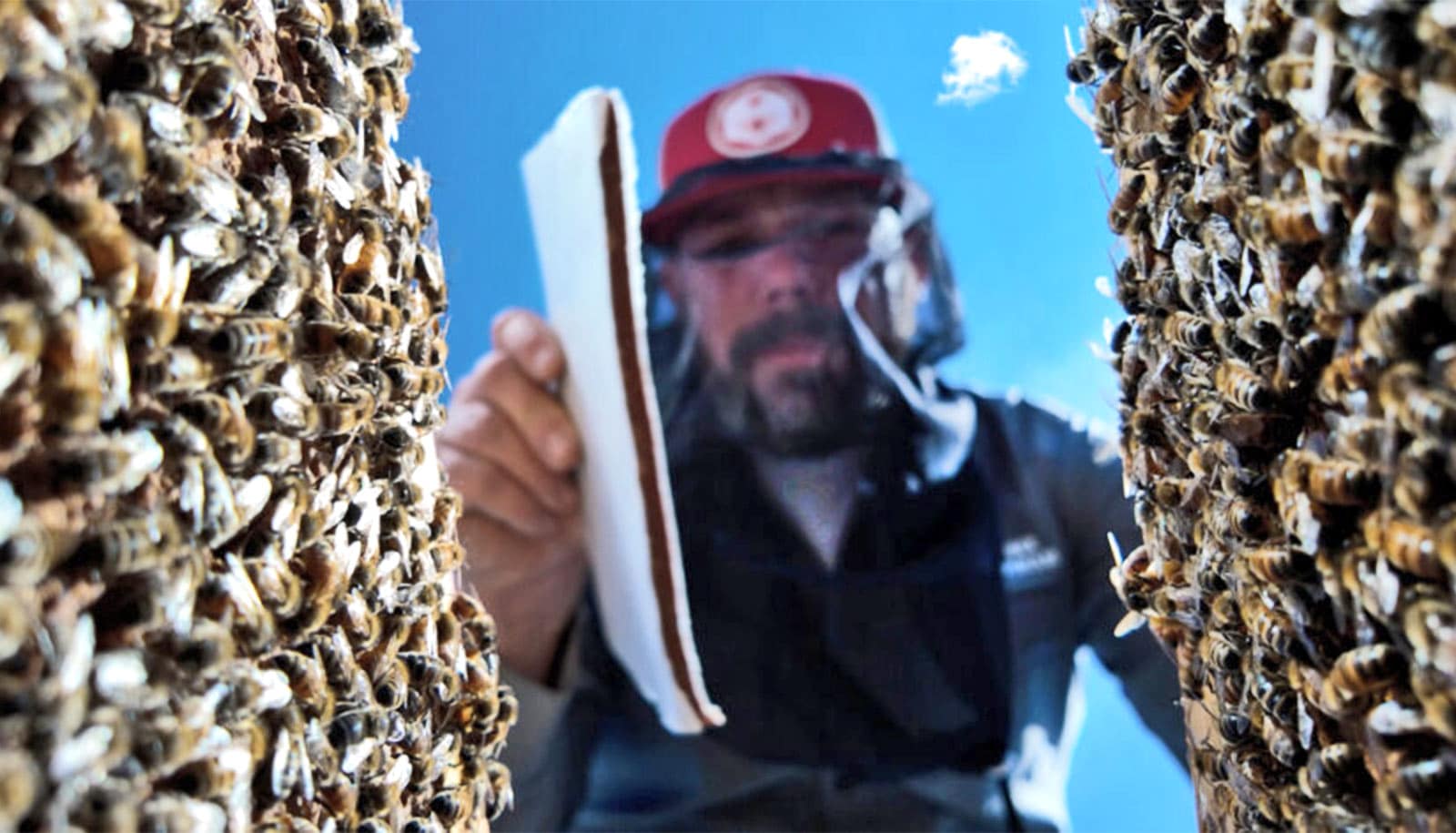When honey bee colonies get larger, common sense suggests it would be noisier with more bees buzzing around. But a new study reports that bigger honey bee colonies actually have quieter combs than smaller ones.
“The surprising result was that—and at first I thought something must be wrong—when there are more bees on the comb, the vibrations are actually reduced,” says Michael Smith, a doctoral student in neurobiology and behavior at Cornell University and lead author of the paper in Behavioral Ecology and Sociobiology.
The findings show that bees actively damp vibrations in the comb, possibly by the way they grasp the combs, though more study is needed to verify the mechanism.
The finding is important because bees communicate with substrate vibrations in the comb, performing a waggle dance to communicate to other bees the exact location of a patch of flowers.
The dance vibrates the comb to spread the message to other bees. Even queen bees transmit vibrational signals to communicate with other queens. But in order to convey the messages, or any message, noise must be eliminated.
According to Smith, the study underlines the universal need to separate signals from noise in all biological systems—from unicellular organisms sensing their environment to human bodies trying to sense hormone concentrations.
Smith needed someone who had the expertise to measure the comb vibrations, and was directed to Po-Cheng Chen, a former doctoral student in electrical and computer engineering, who built computer chips that contain an accelerometer for measuring vibrations in three dimensions. Chen is coauthor of the paper.
“The chip takes 800 samples in one-eighth of a second and does that for as long as you need,” says Smith.
He and Chen attached the chips to the outside of honeycombs in the lab, varying the number of bees on the combs by taking measurements with half a colony and then with an entire colony.
Bee census turns up a new ‘cuckoo’
In another experiment, they took measurements of an active colony at different times of the day, since their numbers fluctuate as bees move in and out. Bees on the combs were counted with each measurement.
The secret to how the bees damp the vibrations could be in their posture, where individual bees straddle many comb cells at once and act as “little staples” by connecting different cells together, Smith says. Another hypothesis is that, like sailors on a teetering boat, bees lean into and compensate for the vibrations, in a manner that has a stabilizing effect.
The researchers also tested whether the mass or sheer weight of bees was damping the comb vibrations, the way a piece of paper with paper clips might wiggle less than a plain sheet. Smith added dead bees into comb cells, and Chen took accelerometer measurements with 400, 600, 800, 1,000, 1,200, 1,400, and 1,600 dead bees on the comb.
To keep bees from disappearing, listen to their buzz
The additional bees “had absolutely no effect whatsoever on the comb vibrations, which showed us that the bees are actually doing something to damp these vibrations,” Smith says.
The results show how living systems, including superorganisms such as honey bee colonies, can overcome physical obstacles with curiously simple and elegant solutions, Smith says.
The National Science Foundation, the Andrew W. Mellon Foundation, and the Garden Club of America funded the work.
Source: Cornell University



